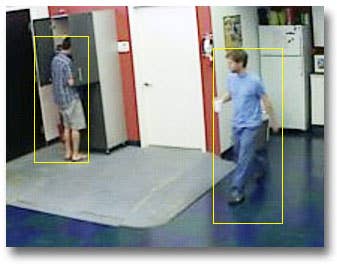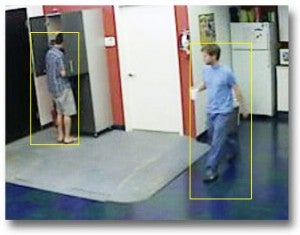New Software Acts Like Human Brain to Find People in Videos

Share

Now that we can program a computer to reason somewhat like a human brain, it seems a little cruel to then set that artificial intelligence to one of the most mind-numbing tasks around: watching security footage. Jeff Hawkins and his company Numenta have developed hierarchical temporal memory (HTM) a means of solving information overload by helping a computer filter and sort the way a brain does. The latest application of HTM is Vitamin D Video, a new company that produces software that will allow you to convert hours of boring video into a shorter highlight reel. Vitamin D can track people and objects allowing you to find only those video segments that interest you. TV news interns and CCTV watchmen everywhere are rejoicing.
As you know, we've discussed Jeff Hawkins and Numenta's approach to artificial intelligence before. The basic premise is that the human brain works as a pattern prediction engine. It captures new information, compares it to old, determines what it thinks will happen, and waits for feedback to refine its understanding. At the heart of HTM is the ability to break down tasks into smaller more manageable chunks and make more accurate predictions. While Hawkins' approach to AI is better stated as computing based on human reasoning patterns, it has the potential to give us very efficient learning machines. Vitamin D serves as a wonderful example. Whereas most object/person recognition software can cost thousands of dollars, HTM allows Vitamin D Video to be produced cheaply enough to be released in a free beta version. You can sign up here for the beta release coming this fall.
Vitamin D Video uses HTM to help it recognize the movement and static positions of objects and humans. The pattern recognition is sophisticated enough to discover people moving through trees, partially covered by other objects, and facing in any direction. The software interface allows you to set up intuitive filters such as "I want to see when someone opens this door," and you highlight on the screen which door you want. Similar filters exist for crossing lines, movement in and out of frame, etc. Email alerts can be linked to notify you when a filter is triggered in realtime. Unlike more costly software, Vitamin D is supposed to work straight out of the box with no calibration required.
The impact of Vitamin D software is going to come in several waves. First, there's the most obvious use of the product: video sorting/filtering. If Vitamin D can prove itself in the retail/commercial market, it may be expanded into law enforcement. Remember all those CCTV cameras in London that weren't working? Imagine what will happen when police are no longer intimidated by having to wade through hundreds of hours of security footage. They can just use Vitamin D to help them find when a crime was committed. Even better, with the correct filters and email alerts, police could be informed as a crime was happening. That's a huge step forward and would solve a major complaint about the London CCTV system. Of course, making that Orwellian network of cameras popular may be beyond even Vitamin D.
Be Part of the Future
Sign up to receive top stories about groundbreaking technologies and visionary thinkers from SingularityHub.


A second generation of Vitamin D may pick up on more complex clues than position and movement. Projects like Humabio which have developed facial and gait recognition capabilities, are going to be used in high security areas. Realtime monitoring of how you look and walk is used to determine your emotional state and will tell guards if you're a potential terrorist. Using HTM, I could see Vitamin D one day working in a similar fashion but with greater speed and efficiency
Humanoid robots often depend on object/person recognition software to navigate. The pattern recognition portions of Vitamin D could be adapted to enhance the efficiency of such systems. I wonder if the ACE robot that gets lost in Munich would benefit from HTM.
Of course, the ultimate goal may be an artificial intelligence that meets or exceeds human pattern recognition and prediction abilities. While there are many differing opinions on what makes humans intelligent, pattern recognition and prediction are one of the few areas where humans consistently outperform computers. That's why you're sometimes asked to read an image of squiggly letters and numbers to verify a password or registration. As machines become more adept in these fields, the boundaries between human and artificial intelligence will blur.
Whether or not Hawkins and Numenta lead us to AI, the benefits of HTM are here now with offshoot companies like Vitamin D Inc. Numenta makes it's HTM based software freely available, so we could see different companies create some remarkable uses of the technology. I would love to see the next generation of robots recognize people and objects in order to interact with them in a more intelligent way. Maybe my Roomba will finally stop trying to break my ankle.
Related Articles

This Light-Powered AI Chip Is 100x Faster Than a Top Nvidia GPU

Hugging Face Says AI Models With Reasoning Use 30x More Energy on Average

How Scientists Are Growing Computers From Human Brain Cells—and Why They Want to Keep Doing It
What we’re reading